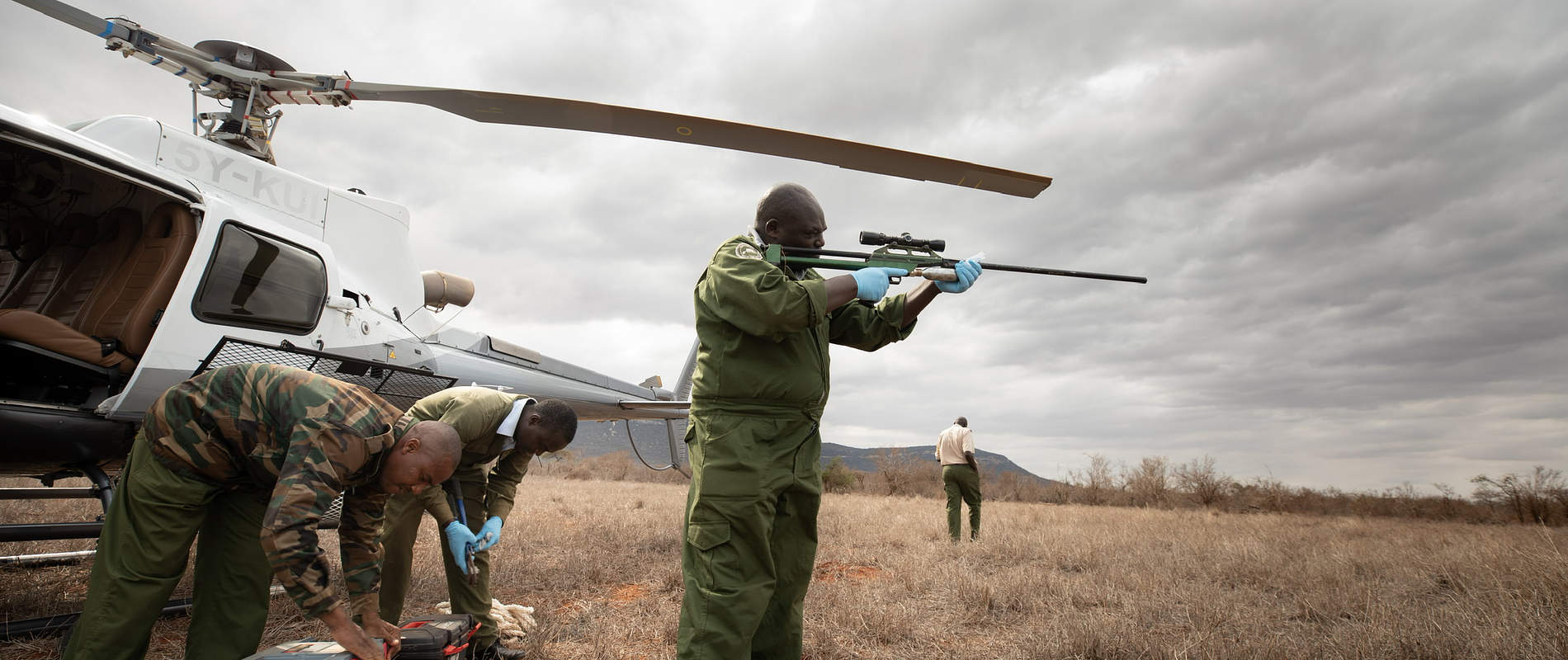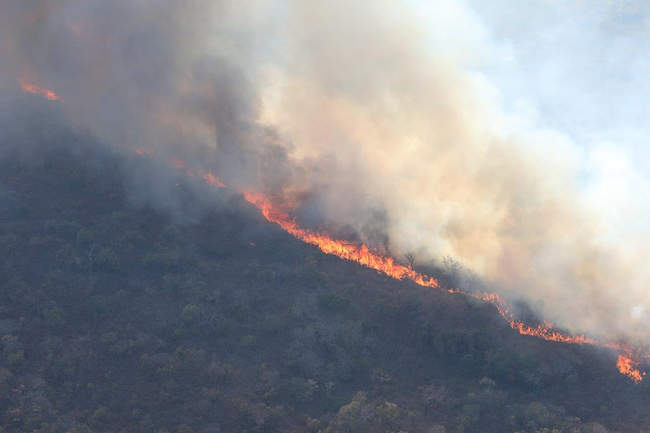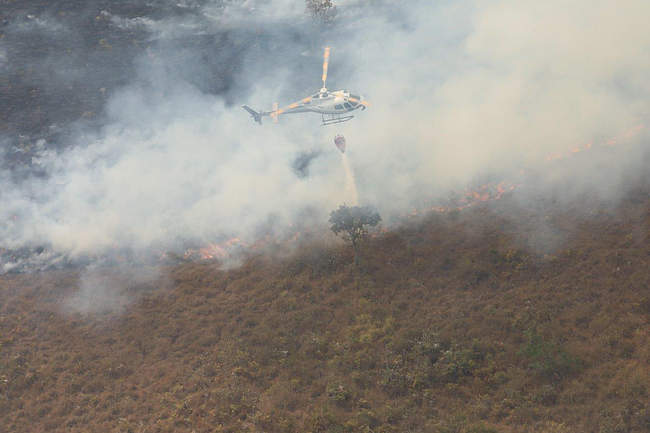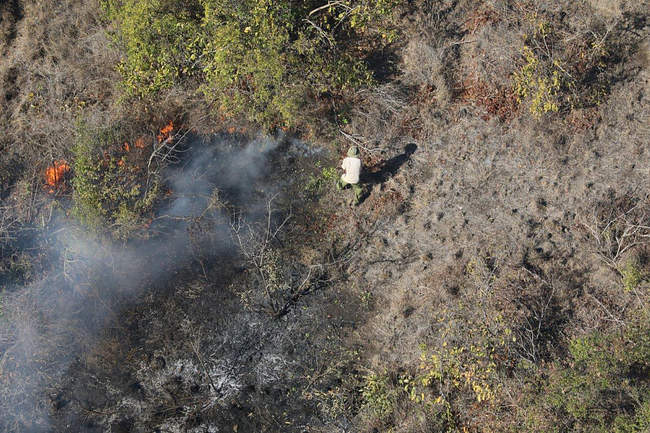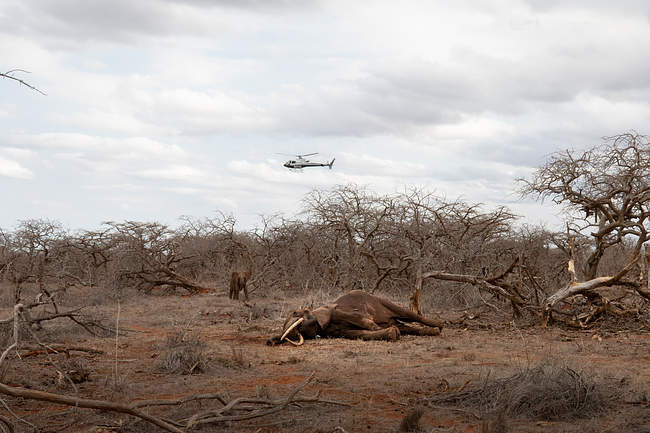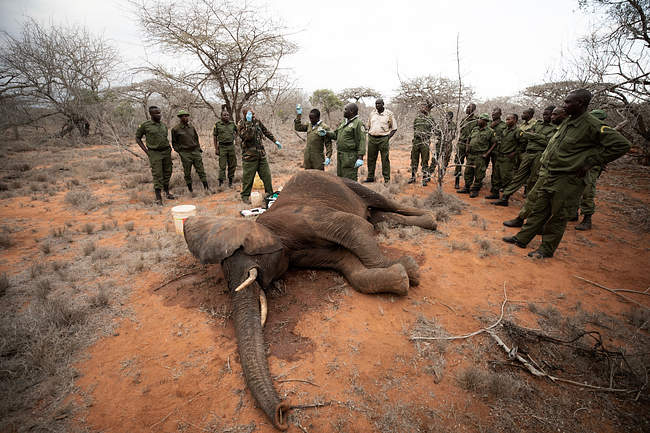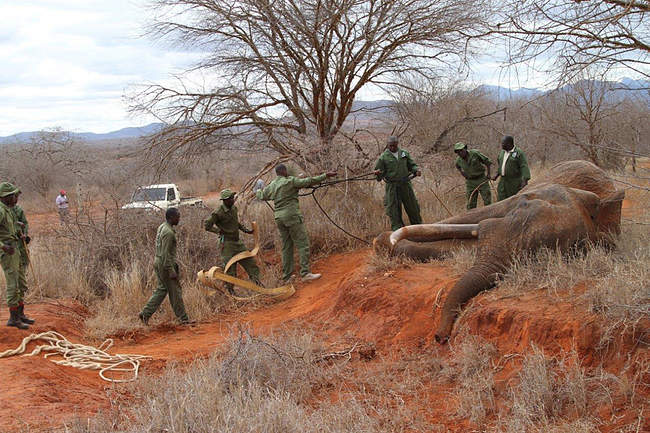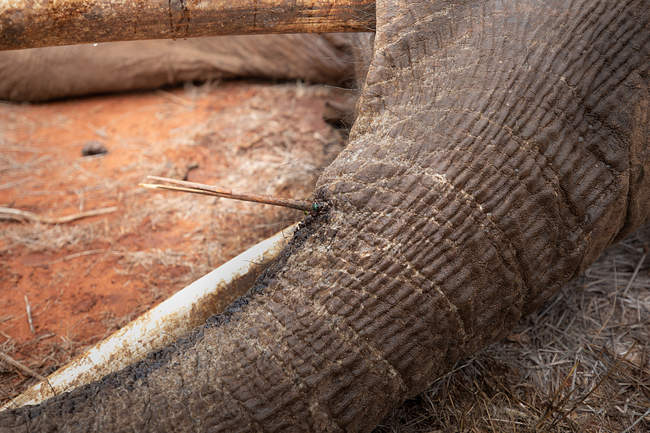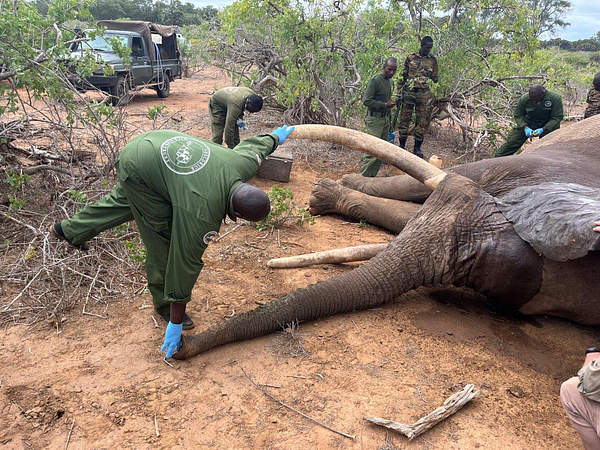From the sky, our pilots have a unique perspective into the worsening drought. Across the Tsavo landscape, conditions are becoming increasingly dry with each passing month. Pockets of browse remain, but it is a very challenging time for wildlife. With drought comes a predictable increase in illegal activities, which continues to keep our Aerial Unit busy.
A steady influx in livestock incursions was observed on the Tiva River and in the southern sector of Tsavo West National Park. This is an exceedingly difficult challenge for KWS rangers to contend with, as herders often bring livestock in for the day and simply move to another part of the park when they are intercepted. In order to address the rise in livestock incursions, KWS set up a temporary ranger camp in one of the most affected areas. Their presence has significantly reduced the number of livestock in the park.
Illegal grazing also brought bushfires to the Chyulu Hills. Several blazes were suspected to have been set by herders in an attempt to improve grazing conditions for their livestock. The worst fires, however, were set by a suspected bushmeat poacher. Pilots also observed illegal logging activity, primarily in the northern sector of Tsavo East National Park and to the east of the park, on Kulalu Ranch. Dozens of charcoal-burning camps were identified, along with hundreds of charcoal kilns and charcoal sacks ready for collection. Over the coming months, our ground teams will focus on this area to address the problem, which is closely tied to bushmeat poaching.
Pilots were involved in the rescues of two orphaned elephants in August. Big Life rangers found the first orphan on Kuku Ranch, alone and in very precarious condition. The calf was flown to the nearby Umani Springs Reintegration Unit, where it received emergency care. Tragically, it was too far gone and succumbed to its weakened state. The second rescue was a very young calf who had gotten stuck in a drying waterhold near Voi. By the time it was discovered, its family had long since abandoned the area, leaving it an orphan. The helicopter transported the calf to our Nairobi Nursery, where it is doing well thus far.
Human-wildlife conflict remains a persistent challenge, especially as the drought continues to take hold. In August, the Aerial Unit responded to three incidents of human-elephant conflict. In a single day, the SWT helicopter responded to three veterinary cases: two adult elephants with suspected arrow wounds and an elephant calf with a snare. Because of the speedy response, which was only made possible through aerial intervention, all three treatments were successful.
Happily, pilots did not observe any fresh carcasses throughout the month. However, two very old elephant carcasses with ivory intact were sighted near Satao Lodge in Tsavo East. The pilot collected ivory from both elephants and handed them over to the KWS in Voi.
The Aerial Unit performed an urgent medivac in August, transporting KWS veterinarian Dr Jeremiah Poghon to Karen Hospital in Nairobi after his team was involved in a vehicle accident during an operation in Tsavo East. One member of the team tragically lost his life in the accident.
There were notable wildlife sightings in August, including lots of lions, several striped hyenas, a pair of wild dogs, and the elusive honey badger.

